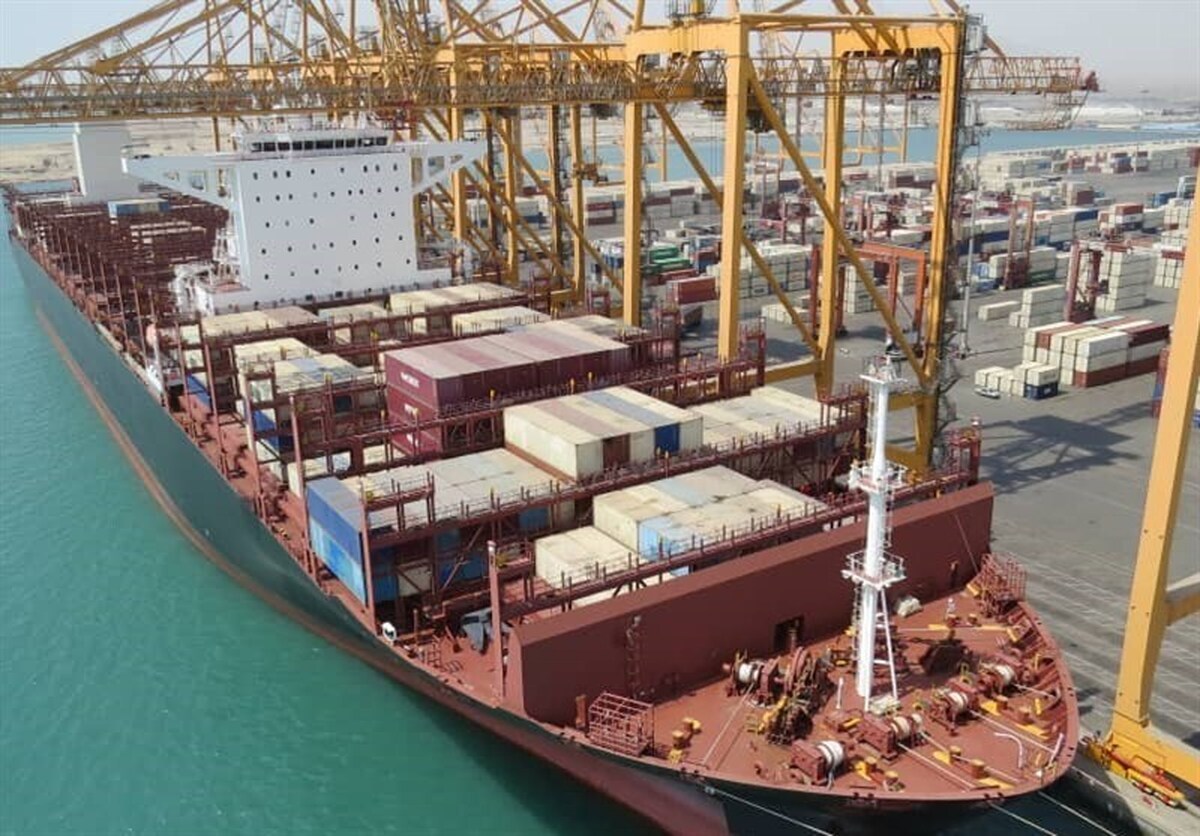
Iranian Port Operations Down 27%
EghtesadOnline: Iran’s 21 major ports loaded and unloaded a total of 18.99 million tons of commodities during the first two months of the current Iranian year (March 20-May 20) to register a 27.04% decline compared with the corresponding period of last year.
The decline comes amid US economic sanctions against Iran, combined with the worldwide coronavirus outbreak and the subsequent downturn in global trade.
Figures published on the Ports and Maritime Organization of Iran’s website show non-oil goods accounted for 12.65 million tons of the total throughput to register a 33.36% year-on-year decline.
The remaining 6.34 million tons pertained to oil products, indicating a 10% YOY decline.
Container loading and unloading decreased by 27.91% to stand at 227,159 TEUs.
More than 7.49 million tons of commodities were exported from the ports under review and over 6.09 million tons were imported, registering a 38.1% decline and a 9.14% increase respectively YOY.
A total of 355,222 tons of goods were transited through the Iranian ports during the same period, indicating a 54.68% YOY drop.
The 21 ports under survey include Iran’s southern ports of Abadan, Imam Khomeini, Bushehr, Khorramshahr, Genaveh, Bandar Lengeh, Chavibdeh, Arvandkenar, Charak and Dayyer located on the shores of the Persian Gulf, Shahid Rajaee, Shahid Bahonar, Qeshm and Tiab at the mouth of the Strait of Hormuz, Jask and Chabahar on the coasts of the Sea of Oman and the northern ports of Fereydounkenar, Noshahr, Astara, Amirabad and Anzali on the Caspian Sea shoreline.
More than 139.65 million tons of commodities were loaded and unloaded at the aforementioned ports during the last Iranian year (March 2019-20) to register a meager rise of 0.17% compared with the corresponding period of last year.
Non-oil goods accounted for more than 95.48 million tons of the total throughput, showing a 0.08% year-on-year growth.
The remaining 44.16 million tons pertained to oil products, indicating a 0.7% increase YOY.
Around 69.65 million tons of commodities were exported from the ports under review and more than 31.15 million tons were imported during the period, showing a 10.28% and 13.92% growth respectively compared with the similar period of last year.
Busiest Ports
A total of 8.54 million tons of commodities were loaded and unloaded in Hormozgan Province’s Shahid Rajaee Port, registering a 27.53% decline compared with the similar period of last year.
In fact, Shahid Rajaee was the country’s busiest port during the period. Non-oil goods accounted for around 4.21 million tons and oil products for more than 4.33 million tons of the total, showing a 46.49% decline and a 10.47% rise respectively year-on-year.
Located 23 kilometers west of the port city of Bandar Abbas, the capital of Hormozgan Province, Shahid Rajaee is Iran’s biggest container port.
Over half of Iran’s commercial trading is carried out at Shahid Rajaee that also accounts for over 85% of all container throughput in the country.
According to Mohammad Reza Rezaei-Kouchi, the head of Majlis Development Commission, Shahid Rajaee Port has a 6% share in the region’s total container throughput per annum, ILNA reported.
Imam Khomeini Port in the southern Khuzestan Province was the second busiest port during the two-month period, handling more than 6.29 million tons of commodities. The figure shows a 16.57% fall YOY.
Non-oil goods accounted for 4.77 million tons and oil products for close to 1.52 million tons of the total throughput at Imam Khomeini Port, registering a 12.02% increase and a 28.23% fall respectively year-on-year.
The third busiest was Chabahar Port, located in the southern Sistan-Baluchestan Province. A total of 780,047 tons of goods were loaded and unloaded there, indicating an 80% rise compared with the similar period of last year.
Non-oil goods accounted for more than 561,663 tons and oil products for 218,384 tons of the total throughput in Chabahar Port, showing a 213.98% and 13.44% growth respectively YOY.
Chabahar is of high strategic importance for Iran, as it is the country’s only oceanic port, which bypasses the narrow Strait of Hormuz connected to the Persian Gulf.
The port, run by India Ports Global Limited, is only 70 kilometers west of Gwadar Port, the starting point of China-Pakistan Economic Corridor. China Overseas Port Holding Company operates Gwadar Port.
In May 2016, India and Iran signed an agreement under which India would refurbish one of the berths at Shahid Beheshti Terminal and rebuild a 600-meter-long container handling facility there.
In December last year, India took over operations of part of Shahid Beheshti Port.
The first phase of Shahid Beheshti Port development project was inaugurated in December 2017 by Iranian President Hassan Rouhani, opening a new strategic route connecting Iran, India and Afghanistan bypassing Pakistan.
Chabahar port town consists of two separate terminals: Shahid Kalantari and Shahid Beheshti. The opening of the first phase, namely Shahid Beheshti terminal (out of five phases defined for the project), which has tripled its capacity to 8.5 million tons (equal to that of all the northern ports of the country), allows the docking of super-large container ships (between 100,000 DWT and 120,000 DWT) and increases India’s connectivity with Afghanistan.
A total of 225,112 passengers were transported to and from the aforementioned ports, registering a 95.32% decline compared with last year’s similar period.



